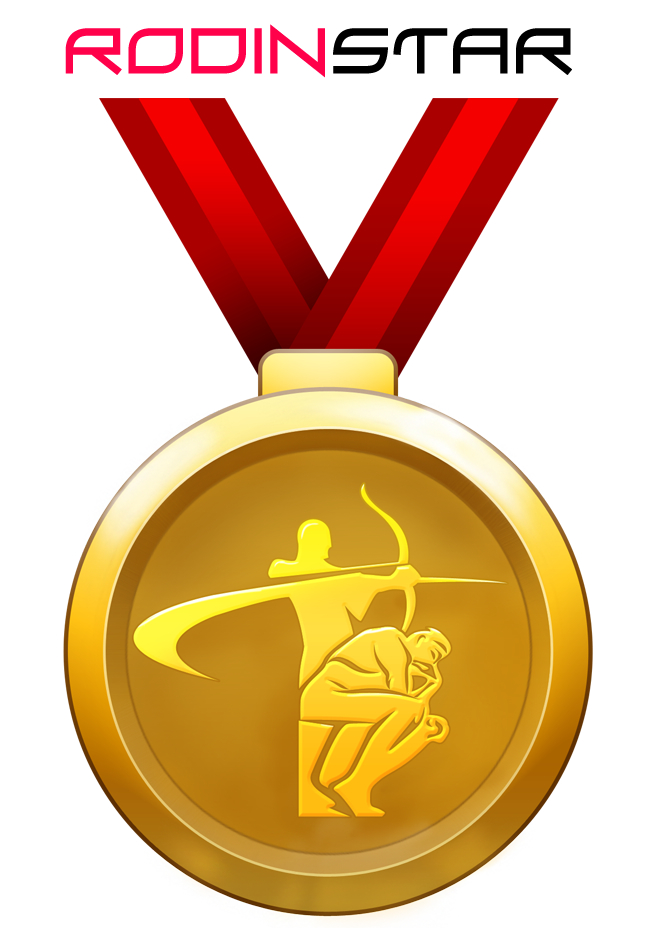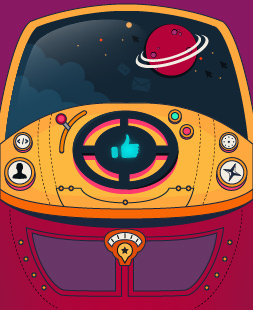Awarded the
“Rodinstar” Post
of the week!!
Losing my entrepreneurial virginity, (my first leap into business):
It was summer 1996. A recent graduate from Business School (1993), I was then an executive at the recently launched Sony Music in Mumbai. 3 months into the role, I realized the job stank of politics, gossip and petty intrigue – it was a startup, but a bloated, overpaid and top heavy one. Very quickly, I put in my papers, and decided that I would start a business by myself.
In business school in Ahmedabad, Sunil Handa was the teacher of one of the more memorable courses, Laboratory in Entrepreneurial Motivation (LEM). We students were a ragtag bunch of assorted backbenchers and misfits, not particularly academic (with a few notable exceptions). The idea of the course was to get students to make that entrepreneurial jump, and overcome the fears of money, unstructured situations and peer success. Sunilbhai was himself a successful entrepreneur and an alumni and a ranker. The course involved factory visits, introspection and practical advise for starting up.
One such idea, Sunilbhai mentioned, was to traverse an Industrial Area (on a motorbike), introduce yourself to each of the managers (typically proprietors or owners), and ask them what supplies they used in their business that was either expensive or poor in quality. Take the exhaustive list generated by the traversal, and subject it to various filters (how bad was the need, what was the ease of sourcing the product, and other business questions) and come up with a list of products that one could arrive at as an inspiration for creating a trading or manufacturing business.
 I had no manufacturing talent or interest, so it would be trading. At one of my early jobs, I had set up a pharmaceutical company and had some experience there. I was also innately interested in medicine and thought I would set up a medical trading company. The only decision left was what product. So I decided to meet individual doctors (of any profession, only based on availability and attitude), and ask them what they used in their trade that was difficult or expensive to procure, and hence could be an attractive item for a potential supplier. I would enter giving my Sony Music card and, then quickly launching into an earnest spiel about how I, a MBA from the best business school in the country, wanted to create value by starting a business, and would be very grateful for their ideas.
I had no manufacturing talent or interest, so it would be trading. At one of my early jobs, I had set up a pharmaceutical company and had some experience there. I was also innately interested in medicine and thought I would set up a medical trading company. The only decision left was what product. So I decided to meet individual doctors (of any profession, only based on availability and attitude), and ask them what they used in their trade that was difficult or expensive to procure, and hence could be an attractive item for a potential supplier. I would enter giving my Sony Music card and, then quickly launching into an earnest spiel about how I, a MBA from the best business school in the country, wanted to create value by starting a business, and would be very grateful for their ideas.
In the generous notice period I had to serve out post my resignation, I met several doctors and made my spiel with lots of sincerity and energy – many of them simply kicked me out, some of them were friendly but useless.
But I had no product, no ideas, and the plot was getting nowhere.
One sad evening, as I was heading home on Bandra’s linking road, I saw a board of a doctor, which read “Consultant Interventional Cardiologist”. I was intrigued as I had had a major cardiac surgery when young, and been in and out of cardiologist clinics). I stepped in and when my time came (typically after a long wait of a couple of hours), I made my spiel. The doctor was extremely pleasant and warm, and removed from his box a slender metallic tube, made of stainless steel (looked like the spring around a ball-point pen, but much much smaller), which he told me was a coronary stent. I believe it was a Palmatz – Schatz bare stent, which was one of the early stents. The stents were mounted on a balloon catheter, threaded into the arteries via a puncture on the Femoral artery and guided to the location of the stenosis (occlusion) by x-ray photographs taken after a radioactive dye, called contrast media, was injected. The stent, the doctor explained, was expensive and it was an emerging industry. At that time a single stent cost the patient USD 1500 – gram for gram a stent was one of the most valuable substances on the planet. – and if I could get stents for around 60% of that, I could be in business. He called me to his Cumballa Hill catheterisation lab for an angioplasty so that I could learn more about the procedure of Coronary Angioplasty.
I was on to something. I started searching for companies that could supply me with this new animal, the Coronary Stent. Somehow, after several weeks of searching (on the ancient internet in 1996), I made contact with a company in Florida, called Orbus Technologies. Founded that year itself, the company was looking to expand and find distributors in India. We arranged to meet in London, where I went courtesy a pair of free tickets given to me as a wedding gift by my father-in-law, who was generally supportive of my entrepreneurial fancies. We had a good discussion with the gent from Orbus, and he agreed to ship 10 free stents as samples to grow the market and we signed a distribution deal.
By the time I had come back to Mumbai, there was a neat FedEx Package labeled “Metallic Tube Samples” from Orbus. I was ready to Rock and Roll !
I met Dr. Vijay with whom I left a few stents on “consignment basis”. Dr. Vijan greeted me effusively and promised to “put” one of my stents soon. Very soon, he did implant one – your stent was stiff, and the vasculature was tortuous – but I put in your stent – I remember him telling me that evening. He then handed me 25,000 rupees in cash that I stuffed my pockets with and went home, passing it completely to my wife. At that time getting 25,000 INR was a big deal. My salary was 37,500 INR per month, which meant I would take home 25,000 every month. Here I was, getting this in a single day!
I had lost my “business cherry”. The thrill of winning made it seem like a breeze. The cash and the affection I seemed to be getting from someone up there were real. The future looked rosy. All I had to do this was to replicate this at scale. More stents with more doctors.
Over the next several weeks, Dr. Vijan implanted 3 more stents, and I had a cash hoard of INR 1 lac. This was my working capital to plot and build the future. I was more generous with sampling, and even bought some more of the early stents from Orbus, but they were very stiff, and the market was moving towards flexible stents. I found several more friends and supporters like Dr. Vijan – Dr. Raju Ghodke in Jaslok was a Senior Interventional Radiologist and again gave me an order for guidewires that I fullfiled entirely out of samples – this time again INR 1 lac !
One thing led to another. I contacted more manufacturers and visited factories in Europe. I diversified in selling anything that was used in the cath lab – Inflation Devices (to inflate the balloon catheter), the balloon catheter itself, guidewires, whatever. I had a reasonably large distribution set up dealing with some of the largest hospitals and most reputed cardiologists.
(The next 18 months would be a roller coaster ride, and forms the basis of separate chapters in my entrepreneurial evolution)
Cut to a decade and a half later. I run a digital advertising company called Ecselis in Singapore. I still am an entrepreneur, although not in the medical trading business. The thrill of the chase is fresh, and the air is rife with even more possibilities. I wake up every morning figuring out how to execute the next hunt and get the next dollar in.
My investment in coronary stents made 15 years ago, is still paying off.
Illustrations copyright Ecselis/ Ioana Halunga, portraying Hallucinogenia, Capital of the Ecselis Hypersystem, Centaurus Constellation, 2093 AD








asha chaudhry
from coronary stents to digital advtg…. wow! that’s some story….
welcome to therodinhoods rajeev!!
Mandar Joshi
Inspiring Story Rajeev Sharing this with your permission 🙂
Alok Rodinhood Kejriwal
reminds me of how i started – met a banker under a tree (while waiting) and a started bill discounting business! awesome!
Zuhaib Khan
Amazing story! You should write a ‘Part II’ of how you progressed and finally started a digital media agency. Should be a good read, for sure.
Mahesh Khambadkone
A great read that’s inspiring too.
To continue using your metaphor, it will be interesting to know what happened for you to leave her for someone else ? Was it because you got addicted to the sex, it was a first crush & you moved to something more serious, or you got tired & was looking for someone more compatible / attractive ? :))
Pawan Deokule
Dear Rajeev,
Very interesting read, the article is written well and forms a perfect sense of curiosity. It is quite rare to see one who follows what a professor teaches in college to a real life situation because they are great in theory but hard to make practical.
“traverse an Industrial Area (on a motorbike),” this is like a dhirubhai moment!
The ride has been quite exhilerating for you and landed you into digital marketing (I run a digital company called digicat), it would be great if we could connect and share ideas.
Would love to read more of what you have to write….
Usman Rafi
As someone who has been in the medical equipment business for over 15 years, and is now transitioning into the digital age, I truly enjoyed your story. Btw, one of my product lines was cardiac surgery equipment.
Ashwin C Parulkar
Interesting story…yet abruptly seems cut short?
Sridhar V
Inspiring story Rajeev. Eager to learn about your Part II of the journey.
Some insights on how you moved from coronary stents to advertising agency will be a valuable case for aspiring entrepreneurs.
Ratnakar Gokarn
This is EPIC stuff! True entrepreneurship.
asha chaudhry
hi rajeev,
you seemed to have missed reading this post – https://www.therodinhoods.com/forum/topics/may-june-winners-of-think-do-goodies
🙂